QuestionHello Diane, I have a mature male leopard gecko. I noticed his last two sheds were slightly rough (toes and snout weren't shedding as easily) I've carefully Q-Tipped his toes getting the old stubbord skin off. I read alot about these guys prior two getting one so I'm not completely in the dark. Olny thing is he a tough guy. You can't hold him still at all he's strong too. Nor can you flip him on his back, he won't just chill (He's not skiddish at all and I am always gentle and slow when handling him.
After his last shed I fixed his toes, but then noticed he was keeping his eyes closed all the time. I believe he has a small peice of shedded skin stuck on his EYE! I can tell because if i nudge my finger around in his vita-sand he gets curious and then eventually opens his eyes then licks his right eye. You can see something... Anyways think I will need a vets assistance on this. Is there any way you can sedate them without it being hazardous?
The reason being that you can't just hold him still and I doubt he will let you clean his eye. What should I do? I don't assume any vets or vet clinics around my area will know how to handle this! He can't see to eat, though he's hefty and doing okay for the moment I know he needs something... Thank you.
AnswerHi Steven,
I know what you mean about tough!! I have a female leo that will chase your hand to bite and does not take well at all to being picked up or held. Not wanting to be held is more of the normal for leos. You might want to try taking him out more often to explore and climb on you. That MAY help him tolerate being held more.
I do suggest that you remove the sand as it is deadly to leos. I am including a basic care sheet that I wrote to help people out. In it are suggestions to safe substrate and also a link to what can happen when they are kept on sand.
He may have some sand in his eye and not a piece of shed. You can try to very carefully rinse the eye with saline, such as what is used for contact lenses. Sedation isn't recommended unless 100% necessary. Restraining is generally enough to calm them down. You don't what him on his back as that can make breathing very difficult for them. To restrain him, wrap him in a wash cloth or hand towel. Be sure that you have him wrapped fairly tight and that his tail is not hanging out. Sitting him on the wash cloth or hand towel, you can then wrap him in it.Chances are, he will try to bite so be prepared. The ideal would be to have a helper, one to hold your little monster and one to rinse the eye.
The care sheet also has links to finding vets that can treat reptiles.
As to stuck shed, are you using a humid hide for him? More on that below. I like using the moss in the hide as it also helps to rub the shed off along with providing the needed humidity for an easy shed.
When you have stuck shed, you can apply some Vaseline to the area which will help the shed to loosen.
BASIC CARE FOR A LEOPARD GECKO
Leopards are pretty easy to care for but they do need
special care. Here are some of the basic needs of your gecko.
HOUSING: The need to have at least a 20 gallon long tank for one Leo. This needs to have a secure fitting screen top...they can be quite the escape artists!!! They need to have a humid hide box.You can make this with something as simple as a small plastic dish with a hole cut in one side and a small mesh bag filled with some Sphagnum moss coconut bark or Peat moss that you mist.
I made mine out of the small plastic folgers coffee containers...I cut an opening in the lid..and put the moss in..they LOVE it. I use the terrarium moss in mine.
I use that on the warm side of the tank. Be sure to provide a cool hidebox on the other end. I also provide a mid temperature hide...which is in the middle of the tank.I use the critter caves which you can purchase. NOT the ones that have heat in them!!!!
Provide secure climbing areas for your gecko. Fake plants, rocks and branches are all fine to use. be sure there are no wires or sharp ends to any fake plants you use.
*****SUBSTRATE:(that's the stuff on the floor of your tank) Newspaper, lizard carpet or paper towels work great and are easy to clean and are much safer than any loose substrate. Sand or other loose substrate is not recommended as that they can be deadly to the leo when it is ingested(eaten, even by accident while eating their insects)...A very graphic site of an impacted leo surg can be seen at http://homepage.mac.com/exoticdvm/reptile/PhotoAlbum181.html it is very graphic!!! ******What I have found that works great for safety and heat distribution is using about 1/4 inch of childrens play sand(since the tiles fit tight together, there is no sand danger) on the bottom of the tank and on top that you place ceramic or slate floor tile. What is nice is that the 12 x 12 squares fit perfect in a 20 gallon tank with no spaces between the tiles. The sand and the tile distribute the heat wonderfully. Using the under tank heater as described is what distributes the heat. Also, overhead heat will help in heating the tiles...I've been using this set up for several years and the leos love it. Using a tile that isn't smooth is recommended. **********
TEMPERATURES: They need a warm area ( on the floor) of 88-92 degrees and a
cooler area in the upper 70s, low 80s. At night their temperature can drop to the low to mid 70's.
Never use a hot rock for a leopard gecko...or any reptile.
They can severely burn any reptile. You can use a heating
pad under the tank,under tank heater for the warm area. You can use a regular household lightbulb in a dome fixture with a ceramic socket in it to keep the warm area at the 88-92 degree area if needed there, otherwise, placing the lightbulb about midway in the tank will give the needed temperatures throughout the tank. You may have to play with the wattage of the bulb but generally 40-60 watts is sufficient.At night, no white light. If room temperatures stay above 70 degrees, no extra night heat is needed. The undertank heater or heating pad should cover about 1/3 of the tank....be sure to raise the tank up about 1/4-1/2 inch off the stand when using an undertank heat source to prevent heat build up which can cause the glass to break and hot spots in the glass. Be sure to have a good layer of newspaper, carpeting or, even a thin flat rock(such as tile) on top the area that the undertank heat source is placed...if you use a thin rock or tile, it helps to distribute the heat very well.
You can use the special nighttime lights that are designed for reptiles. I like using a ceramic heat emitter on a thermostat for nighttime heat.
DO NOT use black lights or party lights as they can cause eye damage!!!!
The wattage you use will vary based on room temperature and size of tank.
LIGHTING: Leopard geckos do not need UVB lighting but it does not hurt them to give them uvb. They should have some type of light during the day, be it a uvb tube, regular florescent light, reptile day light or regular household lightbulb. NO white lights at night!!!
Do not use the florescent coil or "U" shaped bulbs for lighting as they can cause what amounts to snow blindness in reptiles.
FEEDING: Geckos should not be fed crickets or other insects that are bigger than the space between their eyes. Generally, hatchlings can be fed more than once a day,juvys can be fed twice a day, adults are fed once daily or every other day, in the early evening. Crickets and other food items such as silk worms, super, and an occasional treat of a wax worm, need to be dusted with a calcium supplement two times a week and also they should have a small dish of calcium in their tank. I use the lid of a milk jug for the little dish of calcium in their tank. For dusting the insects, Use a calcium with no added phosphorus. Insects must be gut loaded(fed) for at least 48 hours prior to feeding your gecko. Remove any uneaten crix or superworms after 15-20 minutes..... Place a piece of cut potato in the tank so that if you have missed any uneaten insects, they will eat the potato instead of nibbling on your gecko!!!
*************You have to be sure to feed your crickets and insects the right foods before feeding them to your gecko. If your crickets/insects are not healthy and well fed, your gecko will not get the nutrition he needs. You can gut load your crickets and insects greens, veggies, cereals or specially designed commercial foods for crickets or the insects you are feeding. ************
Be sure to have a small dish of clean water for your gecko at all times!!
You can offer them some baby food or fruits on occasion ...
Mine will even eat a small piece of watermelon now and then.WATER: always provide a dish of drinking water. If you choose to mist your gecko to drink, its best to not get the tank too wet as that they do not do well with higher humidity. Sometimes its better to take your leo out of their tank to mist them to get them to drink!!!
HANDLING: Some geckos enjoy being held...others prefer not to be handled at all. Be sure to be very gentle when holding your leo and NEVER grab them by the tail! Their tails are extremely fragile and will break.
I do suggest finding a vet that can treat reptiles BEFORE you actually need one!!! To find a vet that is able to care for reptiles:
http://www.herpvetconnection.com
http://www.arav.org/ECOMARAV/timssnet/amm/tnt_mdsearch.cfm
http://www.anapsid.org/vets/
For more information on leopard geckos:
http://www.drgecko.com
If you have any questions or don't understand something, please let me know.

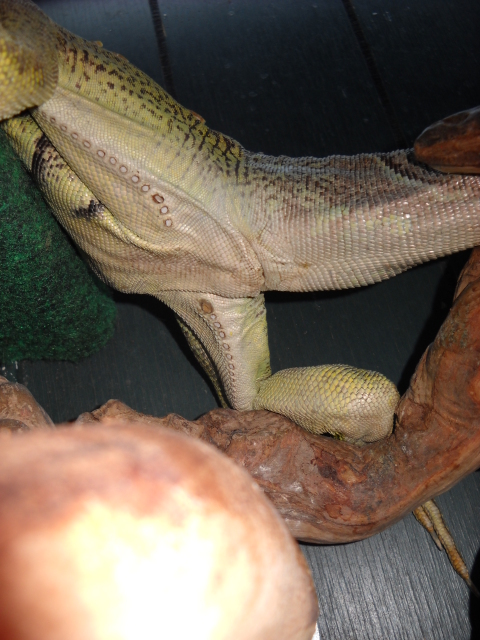 pics
Questionspike
QUESTION: idk if it will work but
pics
Questionspike
QUESTION: idk if it will work but
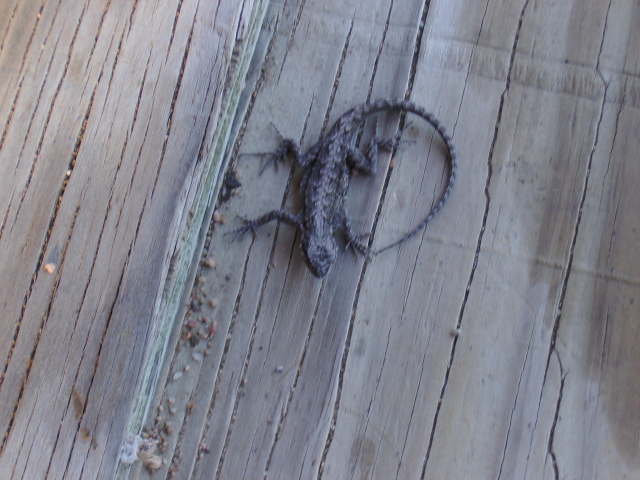 ID central Texas lizard?
QuestionQUESTION: I have a strangely acting and type of
ID central Texas lizard?
QuestionQUESTION: I have a strangely acting and type of
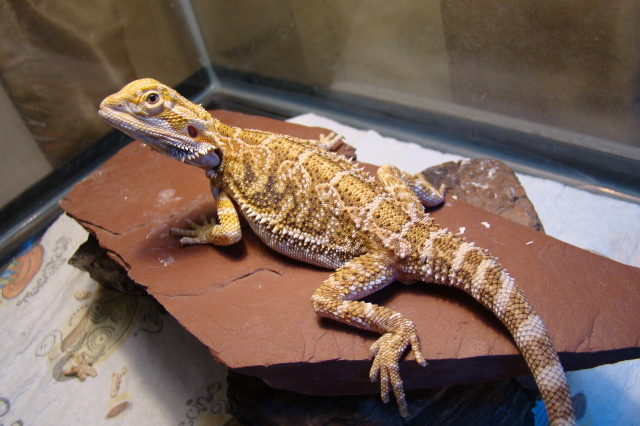 constipation
QuestionQUESTION: My bearded dragon will be a year in t
constipation
QuestionQUESTION: My bearded dragon will be a year in t
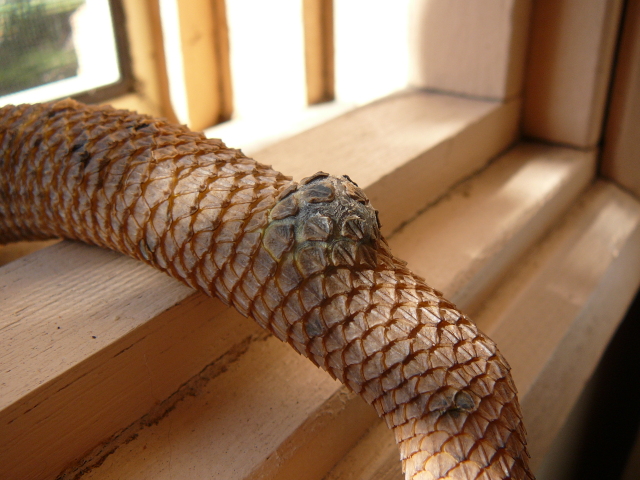 My beardie has developed a lump on her tail
QuestionTrigger
QUESTION: Hi, weve had Trigger f
My beardie has developed a lump on her tail
QuestionTrigger
QUESTION: Hi, weve had Trigger f
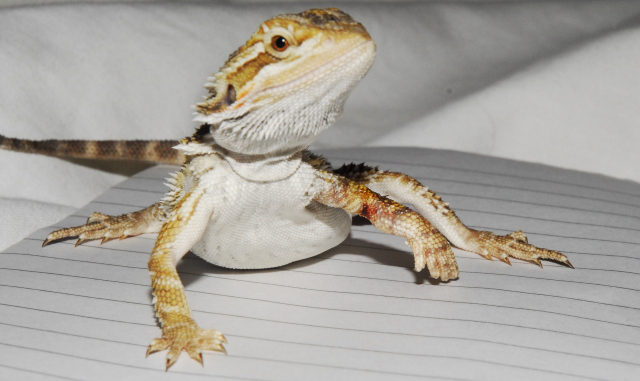 Baby beardy has broken arm
Questionshe still climbs but t
QUESTION: i hatch
Baby beardy has broken arm
Questionshe still climbs but t
QUESTION: i hatch